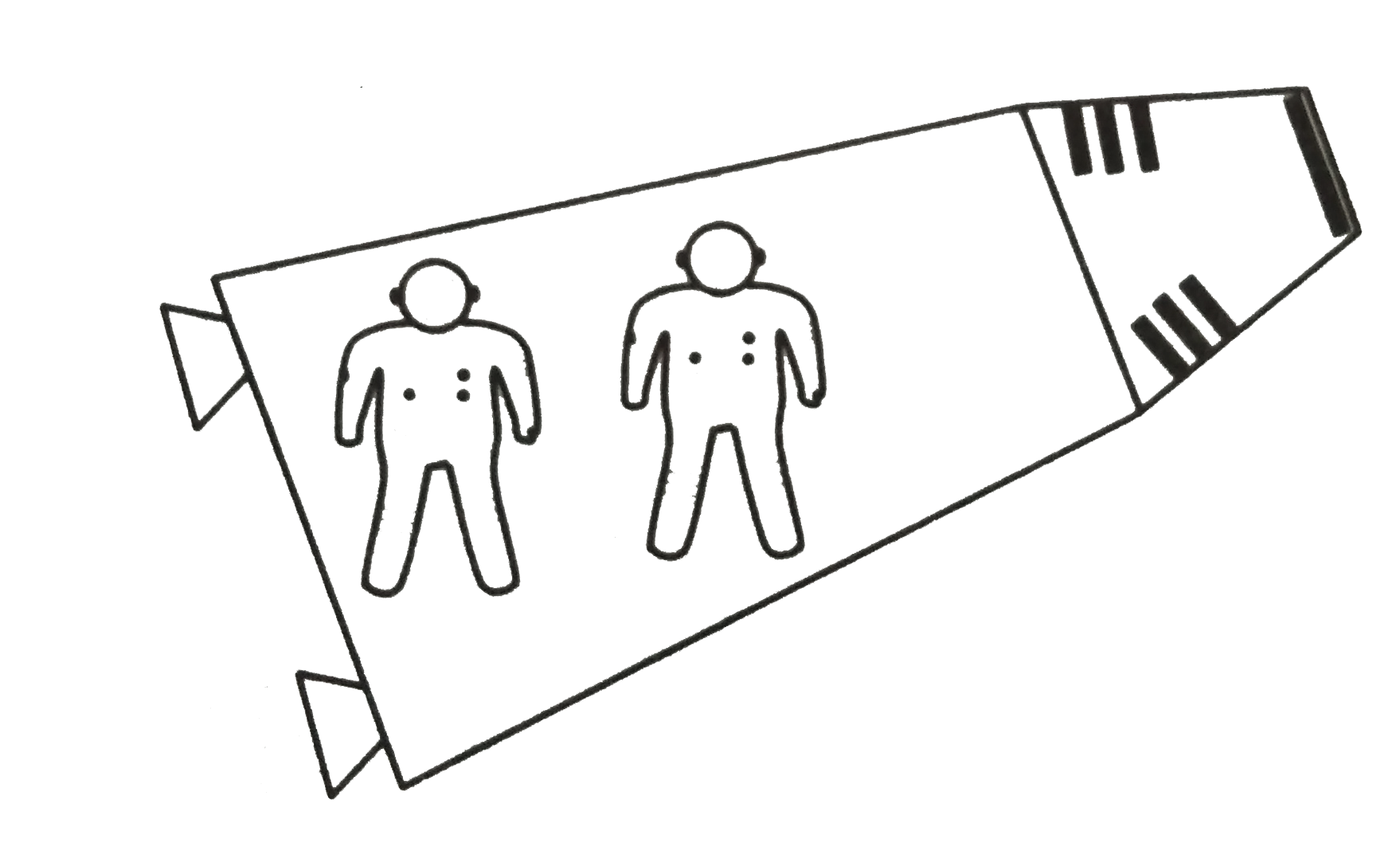Two particles X and Y, of equal masses and with unequal positive charges, are free to move and are initially far away from each other. With Y at rest, X begins to move towards it with initial velocity u. After a long time, finally:
The correct Answer is:A
Equal electrostatic force (mutual interaction) acts on X and Y but in opposite direction which accelerate Y but retards X. After long time the velocity of X becomes zero while Y becomes u.
Topper's Solved these Questions
- BOOK - ALLENCHAPTER - MISCELLANEOUSEXERCISE - Exercise-031videos
MISCELLANEOUS
- BOOK - ALLENCHAPTER - MISCELLANEOUSEXERCISE - Exercise-041videos
MISCELLANEOUS
- BOOK - ALLENCHAPTER - MISCELLANEOUSEXERCISE - Exersice -05(B)19videos
MISCELLANEOUS
- BOOK - ALLENCHAPTER - KINEMATICS (MOTION ALONG A STRAIGHT LINE AND MOTION IN A PLANE)EXERCISE - BEGINNER S BOX-78videos
KINEMATICS (MOTION ALONG A STRAIGHT LINE AND MOTION IN A PLANE)
- BOOK - ALLENCHAPTER - PHYSICAL WORLD, UNITS AND DIMENSIONS & ERRORS IN MEASUREMENT EXERCISE - EXERCISE-IV8videos
PHYSICAL WORLD, UNITS AND DIMENSIONS & ERRORS IN MEASUREMENT
Similar Questions
Two particles X and Y of equal mass and with unequal positive charges, are free to move and are initially far away from each other. With Y at rest,X begins to move towards it with initial velocity u. After a long time, finally
View SolutionA charge +Q is uniformly distributed over a thin ring with radius R. A negative point charge −Q and mass m starts from rest at a point far away from the centre of the ring and moves towards the centre. Find the velocity of this particle at the moment it passes through the centre of the ring .
View SolutionA particle of mass m with an initial velocity uˆi collides perfectly elastically with a mass 3 m at rest . It moves with a velocity vˆj after collision , then , v is given by :
View SolutionConsider the elastic collision f two bodies A and B of equal mass. Initially B is at rest and A moves with velocity v. After the collision -
View SolutionA particle of mass m moving with speed v in position x - direction collides perfectly inelastically with another identical particle moving with same speed in positive y - direction . Find final velocity of the combination.
View SolutionA block at rest explodes into three equal parts. Two parts start moving along X and Y axes respectively with equal speeds of 10 m/s. Find the initial velocity of the third part.
 View Solution
View SolutionTwo masses of 0.25 kg each moves toward each other with speed 3 ms−1 collide and stick together. Find the final velocity
View SolutionA uniform cube of mass m and edge a moves on a horizontal surface along the positive x-axis, with initial velocity v0. Then
View SolutionPositron is the antiparticle of an electron .It has the same mass as an electron but the opposite charge An electron and a positron moving towards each other with equal and opposite velocities.
View SolutionTwo particles of masses 2 kg and 3 kg are at rest separated by 10 m. If they move towards each other under mutual force of attraction, the position of the point where they meet is
View Solution

